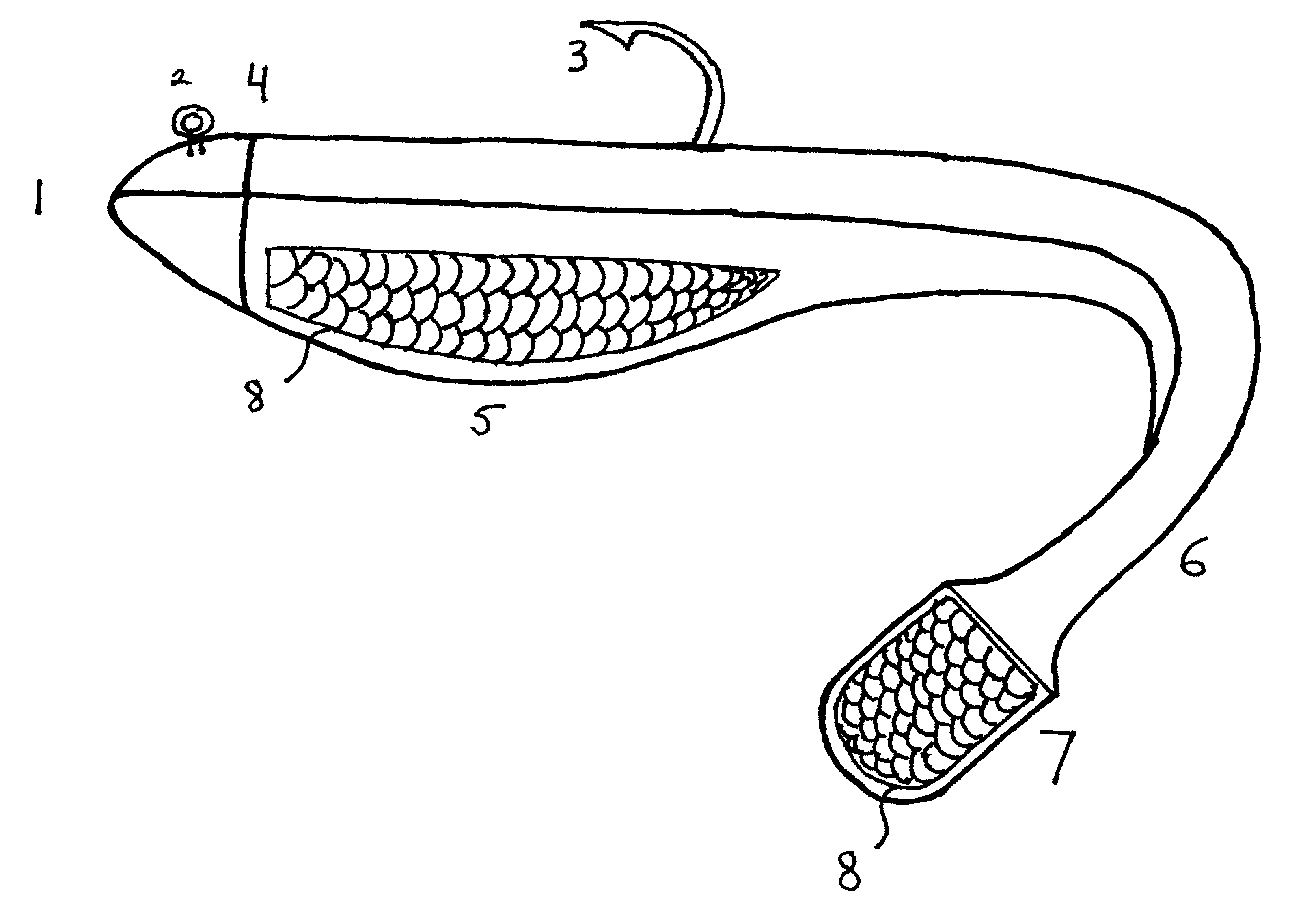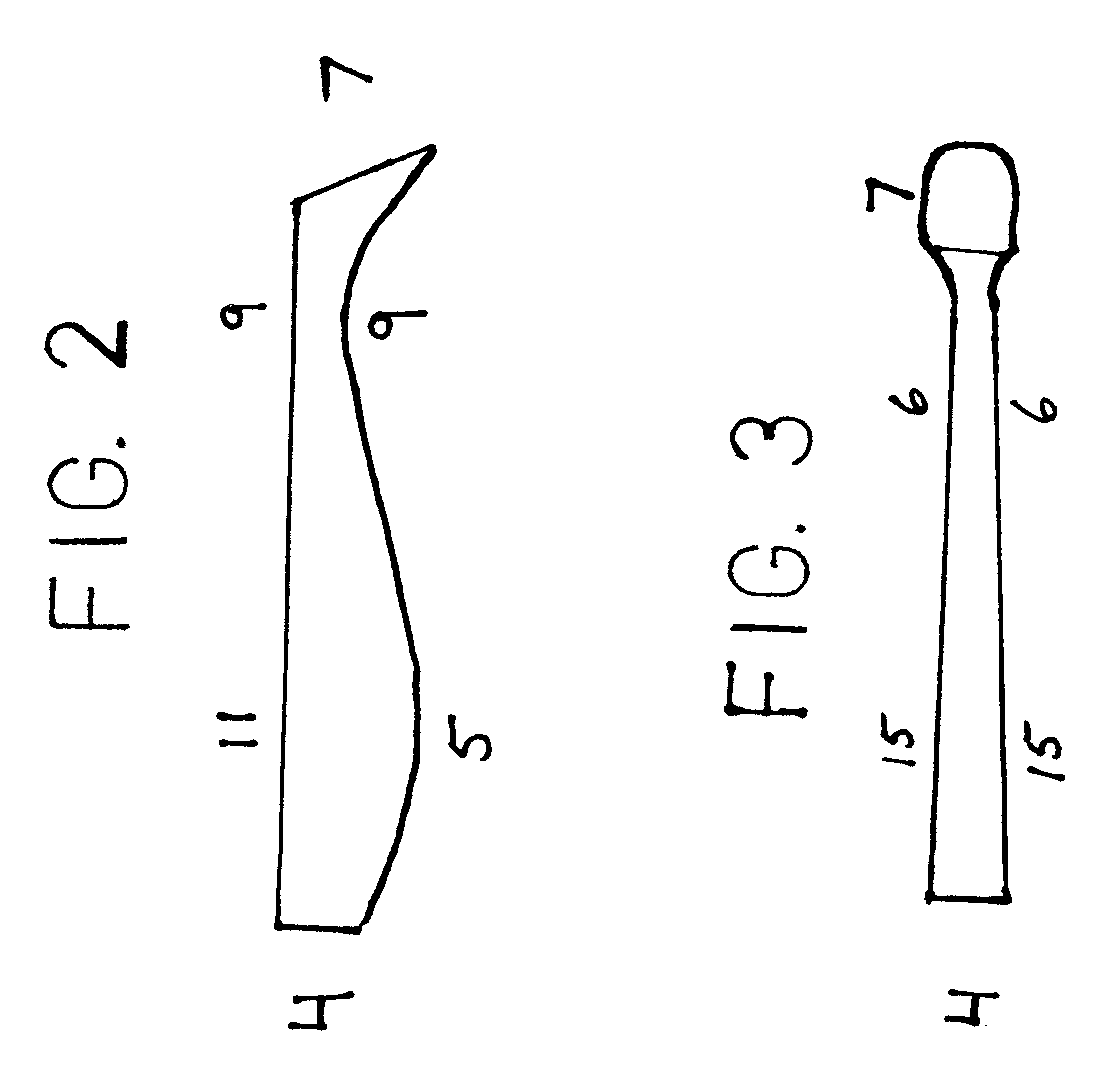Fishing lure
a technology for lures and lures, applied in the field of fishing lures, can solve the problems of hard plastic lures that have seen virtually no improvement in reflective performance, glitter does not come close to imitating the brilliant reflection of skin and scales, and cannot match the reflective ability of other lures such as hard plastic lures or metal lures
- Summary
- Abstract
- Description
- Claims
- Application Information
AI Technical Summary
Problems solved by technology
Method used
Image
Examples
Embodiment Construction
FIG. 4 is the same lure as the lure in FIGS. 1-3, except with a rectangular or square shaped paddletail.
FIG. 5 is the same lure as the lure in FIGS. 1-3, except with a much larger paddletail.
FIG. 6 is the same lure as the lure in FIGS. 1-3, but with a slimmer body.
FIG. 7 is the same lure as the lure in FIGS. 1-3, but with a much deeper belly.
FIG. 8 is the same lure as the lure in FIGS. 1-3, but with a much thinner pre-tail section and with a thinner-paddle-tail. This thinner pre-tail section combined with the paddletail causes the lure to oscillate better at slower retrieval speeds.
FIG. 9 is the same lure as the lure in FIGS. 1-3, except with a rounded or pointed nose.
FIG. 10 is the same lure as the lure in FIG. 9, except with top portion of the lure not being flat, but curved at various points.
FIGS. 11-15 are called swimbaits. Generally, they have a slimmer profile than the paddletail lures. FIG. 22 shows the shape of these lures when viewed from the top.
FIG. 16 is of a similar sha...
PUM
 Login to View More
Login to View More Abstract
Description
Claims
Application Information
 Login to View More
Login to View More - R&D
- Intellectual Property
- Life Sciences
- Materials
- Tech Scout
- Unparalleled Data Quality
- Higher Quality Content
- 60% Fewer Hallucinations
Browse by: Latest US Patents, China's latest patents, Technical Efficacy Thesaurus, Application Domain, Technology Topic, Popular Technical Reports.
© 2025 PatSnap. All rights reserved.Legal|Privacy policy|Modern Slavery Act Transparency Statement|Sitemap|About US| Contact US: help@patsnap.com



